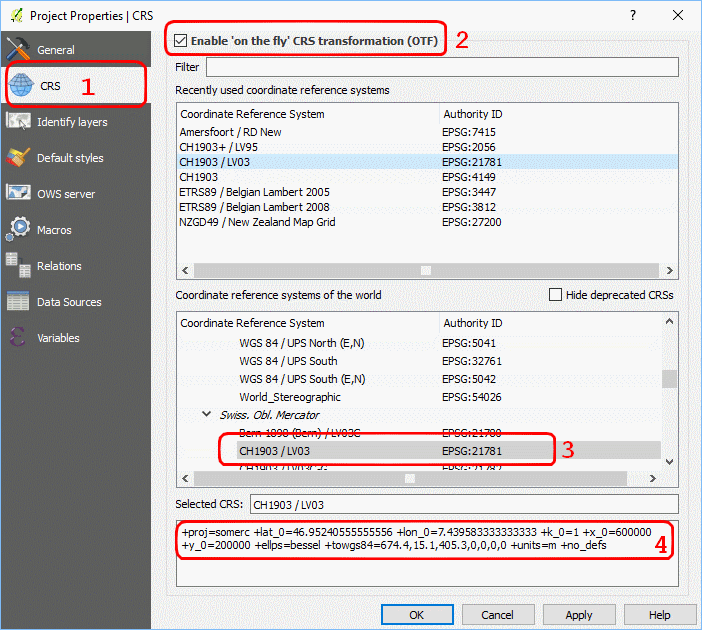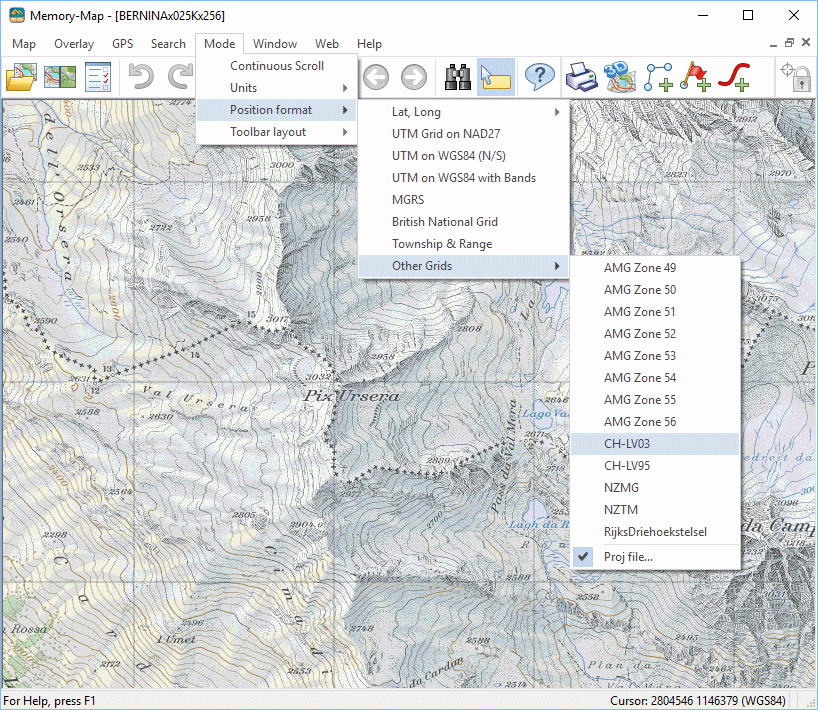Local grids
(Last modified: November 28. 2017)
History
Memory-Map has a limited number of build in (hard coded) Coordinate Reference Systems (grids). It has also a possibility to import external grid definitions (the *.dat files in the grid directory located in Memory-Maps program directory). Knowing this I asked the support desk twice if the could provide me with local grid definitions. The first answer I got was that they didn't provide these files anymore and in the second one they told me to use the generic system. That wasn't my intention. When I am in Switzerland I like to use the Swiss grid. It makes the interaction with Swiss paper maps simpler. so I toke up the gauntlet, went on my quest an found the grail.
My quest on the internet
I started studying the grid definitions Memory-Map provides to us when installing the program. The first break through was the discovery of the website CRS-EU. This site provided me with all the necessary data for the European coordinate systems. After careful consideration I discovered differences in the nomenclature. So I had continue my quest, but got some pressures keywords. Next steppingstone was examining the program QGIS. This program contains information about a lot of Coordinate Reference Systems. And the best part of it: It had the right nomenclature. The last phase of my quest was testing. My testcase were Swiss maps (paper and electronic) because I have a lot of them. Based on the information from QGIS (CRS data), I created a gird definition file for Swiss maps. And it worked out well. On a 1:25,000 scale map (resolution 254 PPI) the coordinates were correct or one pixel of grid! The results you will find on my download page.
How does it work?
I'm sorry, You have to install QGIS. Next step is opening the QGIS desktop version. Open the project properties (image below)

From the Project Properties (image below) select CRS (1). Enable the OTF option (2). Select your Coordinate system (3) and at the bottom (4) of the window you will find a text string with the coordinate system parameters.

| +proj=somerc +lat_0=46.95240555555556 +lon_0=7.439583333333333 +k_0=1 +x_0=600000 +y_0=200000 +ellps=bessel +towgs84=674.4,15.1,405.3,0,0,0,0 +units=m +no_defs |
The last step but one is saving this string in a plain text file with the file extension .DAT. Finally copy this file in to the GRID directory of Memory-Maps program directory.
To apply this coordinate system (image below): In Memory-map go to "Mode" > "Position format" > "Other grids" and select your own grid.

Alternative source grid data
An other source for projection data is the website epsg.io. Just search for the country you need, select the right Coordinate Reference System and copy the "proj.4" information in to your .DAT file.
Some warnings
- Be aware, the selection of the right Coordinate Reference System can be challenging. Some countries have several system; old and new ones, for special an general purpose. So check the projection and the grid of your map, read; about it (for example on the epsg.io website) and select yours.
- Test before using it. There is no guaranty the procedure above works in your case, with your coordinate system. I can't take the responsibility, it is your own risk.